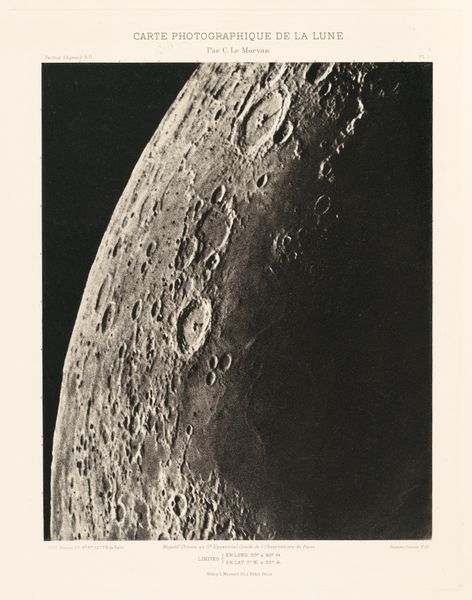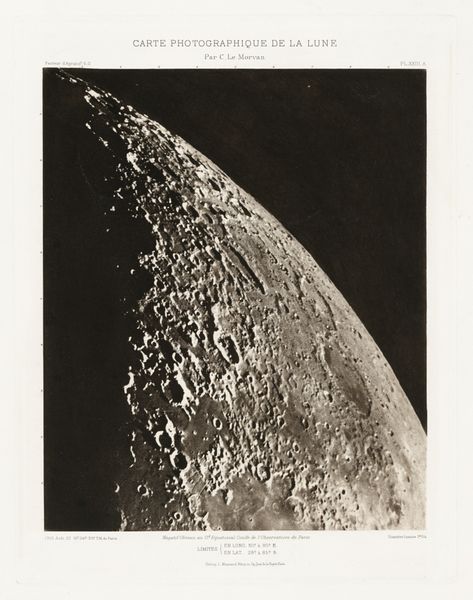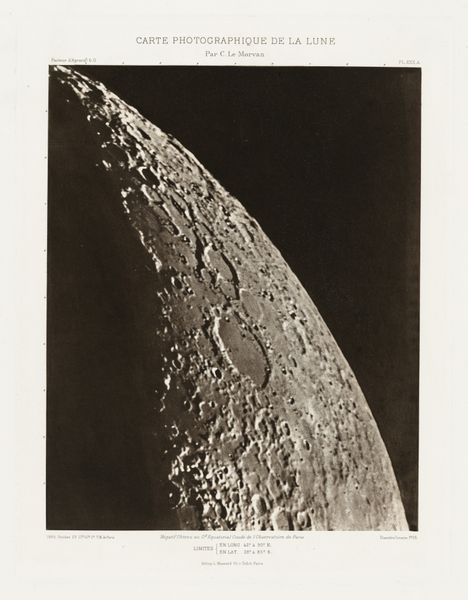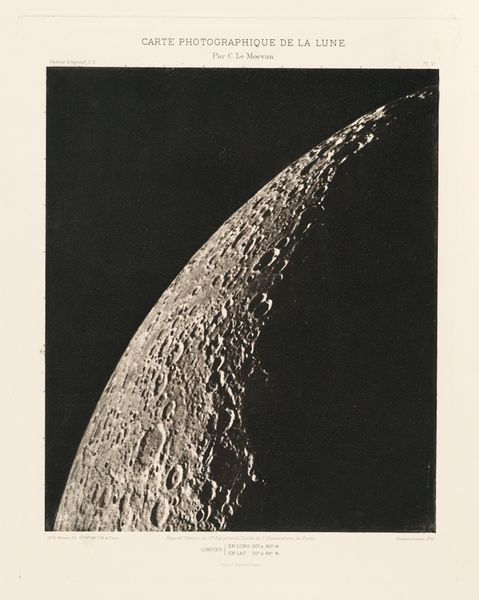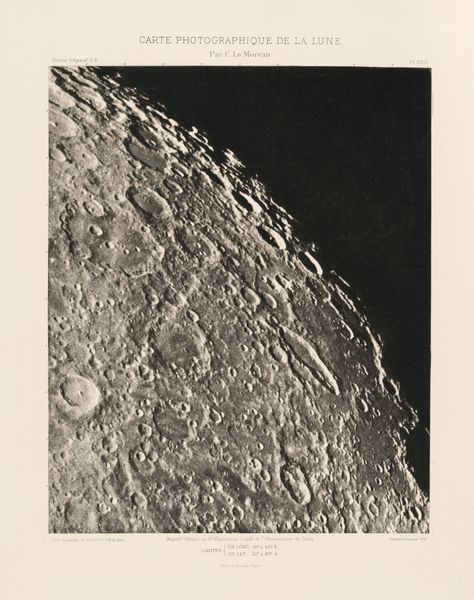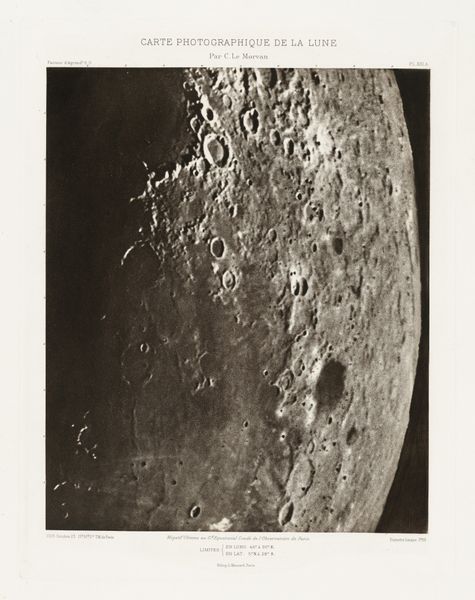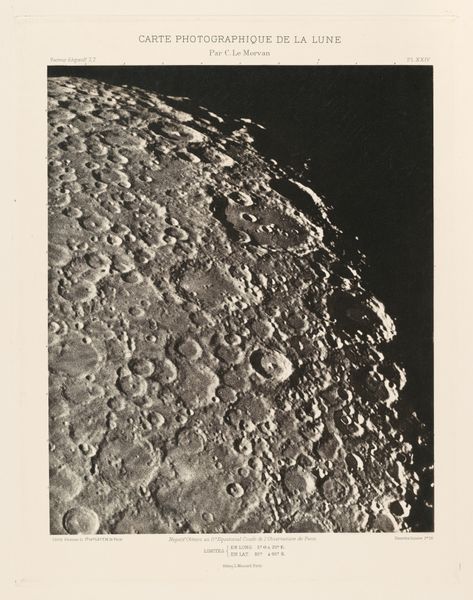
Carte photographique de la lune, planche V (Photographic Chart of the Moon, plate V) Possibly 1907 - 1914
0:00
0:00
print, photography, gelatin-silver-print
#
still-life-photography
# print
#
landscape
#
photography
#
gelatin-silver-print
Dimensions: image: 31.1 × 25.5 cm (12 1/4 × 10 1/16 in.) plate: 38.9 × 29.5 cm (15 5/16 × 11 5/8 in.) sheet: 49 × 37.9 cm (19 5/16 × 14 15/16 in.) tissue: 42.55 × 37.47 cm (16 3/4 × 14 3/4 in.)
Copyright: National Gallery of Art: CC0 1.0
Charles Le Morvan made this photographic chart of the moon, using the photographic techniques available at the time. It's a photo-mechanical print, meaning that the original photograph was transferred to a printing plate, probably through a chemical etching process. The resulting image is a marvel. You can see the texture of the moon's surface, each crater rendered in stark detail. What makes it so compelling is the combination of scientific precision and the inherent qualities of the materials. The weight of the printing plate, the crispness of the ink, and the texture of the paper all contribute to the sense of the moon as a real, tangible thing. Consider the labor involved. Not just the work of the photographer, but also the skilled technicians who prepared the printing plate, and the press operators who ran off each copy. This was a collaborative effort, a testament to the power of technology and teamwork. It highlights how photography, traditionally seen as a purely artistic medium, also depends on industrial processes and collective labor.
Comments
No comments
Be the first to comment and join the conversation on the ultimate creative platform.
